Boiling Point
From Naha to Nemuro, how Japan’s cities are responding to more heat
As Japan’s summers get ever hotter amid climate change, cities across the nation are reaching for everything from automated misting systems to anime to help cool residents and educate them about the risks that heat poses.
Japan just recorded its hottest-ever July, and this year may top the record for the warmest-ever summer that was set only last year. Some places in Japan have long known extreme heat and are relatively well prepared, but temperatures are edging into uncharted territory, even for them. Elsewhere, communities are only just beginning to grapple with the issue.
From the far south to the far north, with one place in between, this is how cities are responding to rising heat across different climatic conditions.
Naha
Given its location in Okinawa, the southernmost prefecture, Naha is used to hot summers, but even there it is having to adapt to rising temperatures. As a first step, it has established a cooling shelter — a refuge for residents during periods of extreme heat — at the city office, and it awaits its first visitors.
The shelter will only be opened once the wet-bulb globe temperature — an index incorporating air temperature, radiant heat and humidity — exceeds 35 degrees Celsius and a special heatstroke warning alert is issued by the Environment Ministry. If the maximum WBGT for the following day is predicted to be 35 C or higher at all monitoring sites within the prefecture, a special heatstroke alert is issued.
“We hope to have the cooling shelter open when there is a risk of severe health damage due to extremely high temperatures,” said Miyako Hachiman from the city’s Environmental Policy Division, adding that anyone would be welcome if they felt unwell or needed a place to rest.
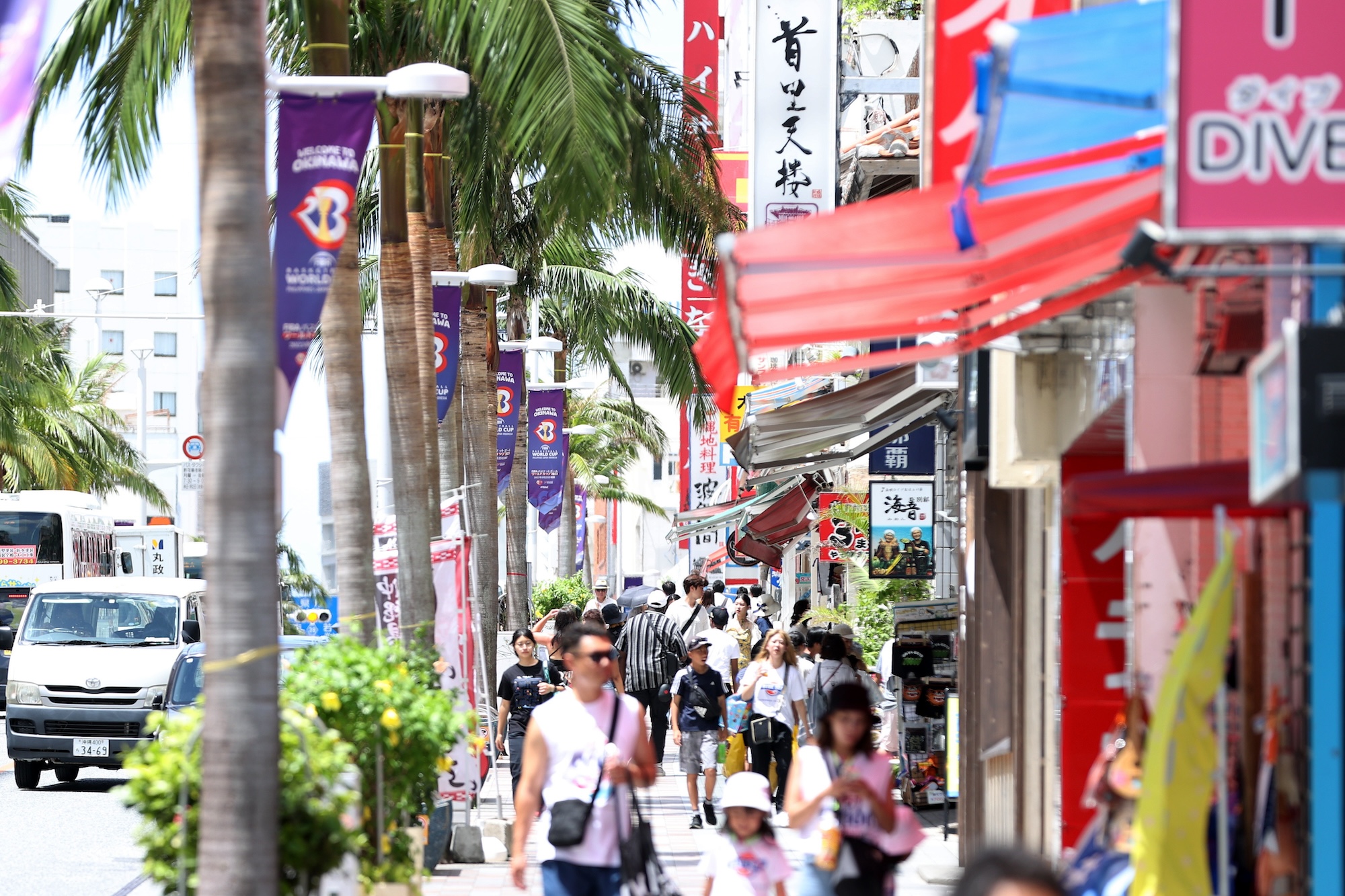
Hachiman said that they plan to have one or two staff members on duty to assist. Nurses from other departments are also scheduled to provide support — although they will not manage the shelter, they will be available to assess whether emergency medical assistance is needed and handle related matters, such as calling an ambulance.
In addition, Hirotaka Tamaki from Naha’s Health Promotion Division said informational flyers on heatstroke prevention are currently being distributed to community welfare commissioners, who help raise awareness and look out for the elderly — a group at a high risk of fatalities from the illness.
The city has also teamed up with Otsuka Pharmaceutical and the popular anime "Cells at Work!" to distribute an educational video on heatstroke prevention through Naha’s official social media accounts and website.
“Understanding how the body functions to prevent heatstroke is essential and can lead to a variety of practical applications,” Tamaki said. “That’s why having an engaging and easy to understand animated video is beneficial.”
In terms of increasing greenery — one approach to combating heat — Tamaki noted that while Naha has the smallest amount of forested land in Okinawa Prefecture, there hasn’t been much discussion on the topic. He added that the most significant difference between Okinawa and other prefectures is likely its status as a tropical island, with this giving Okinawa distinct climatic characteristics.
“It cools down more easily and doesn’t retain heat as much as other places in Japan,” he said.
Furthermore, Okinawa's car-centric culture results in fewer people walking, he said, thereby reducing their exposure to heat.
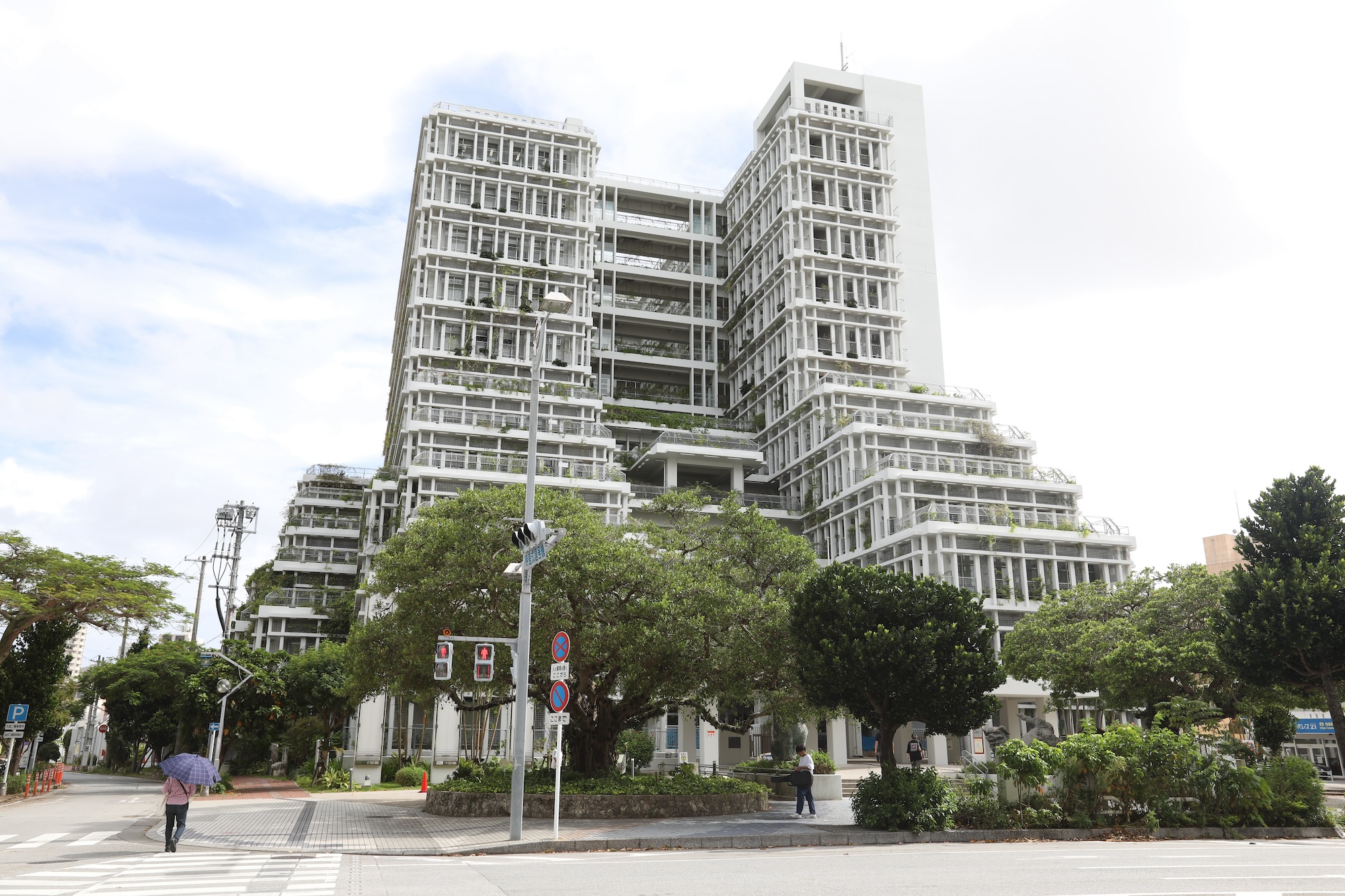
Regardless, there seems to be a disconnect between the older generation’s experience of heat in their youth and current conditions, Tamaki cautioned.
“This gap raises concerns that older adults might mistakenly believe they can handle heat as they did in the past,” he said, emphasizing that while all generations in Okinawa have been raised to be careful about heatstroke risks during outdoor activities, the shifting climate and rising temperatures create a new reality that everyone must navigate.
“This awareness spans across all generations, but people are still just people and need to remain vigilant,” he said.
Kumagaya, Saitama Prefecture
Outside the north exit of Kumagaya Station at the end of July, a handmade billboard advertising “jumbo size” drinks at the nearby McDonald’s posed a serious question: “Have you had enough fluids?”
Kumagaya in Saitama Prefecture has long been known as one of the hottest cities in Japan, if not the hottest. It has broken temperature records multiple times since 2007, when the mercury hit what was then a national record high of 40.9 C.
On July 23, 2018, Kumagaya again set the nation’s temperature record, at 41.1 C. It currently shares that dubious status with Hamamatsu in Shizuoka Prefecture, which matched it on Aug. 17, 2020.
Kumagaya has a population of about 190,000, over 30% of which is age 65 and above.
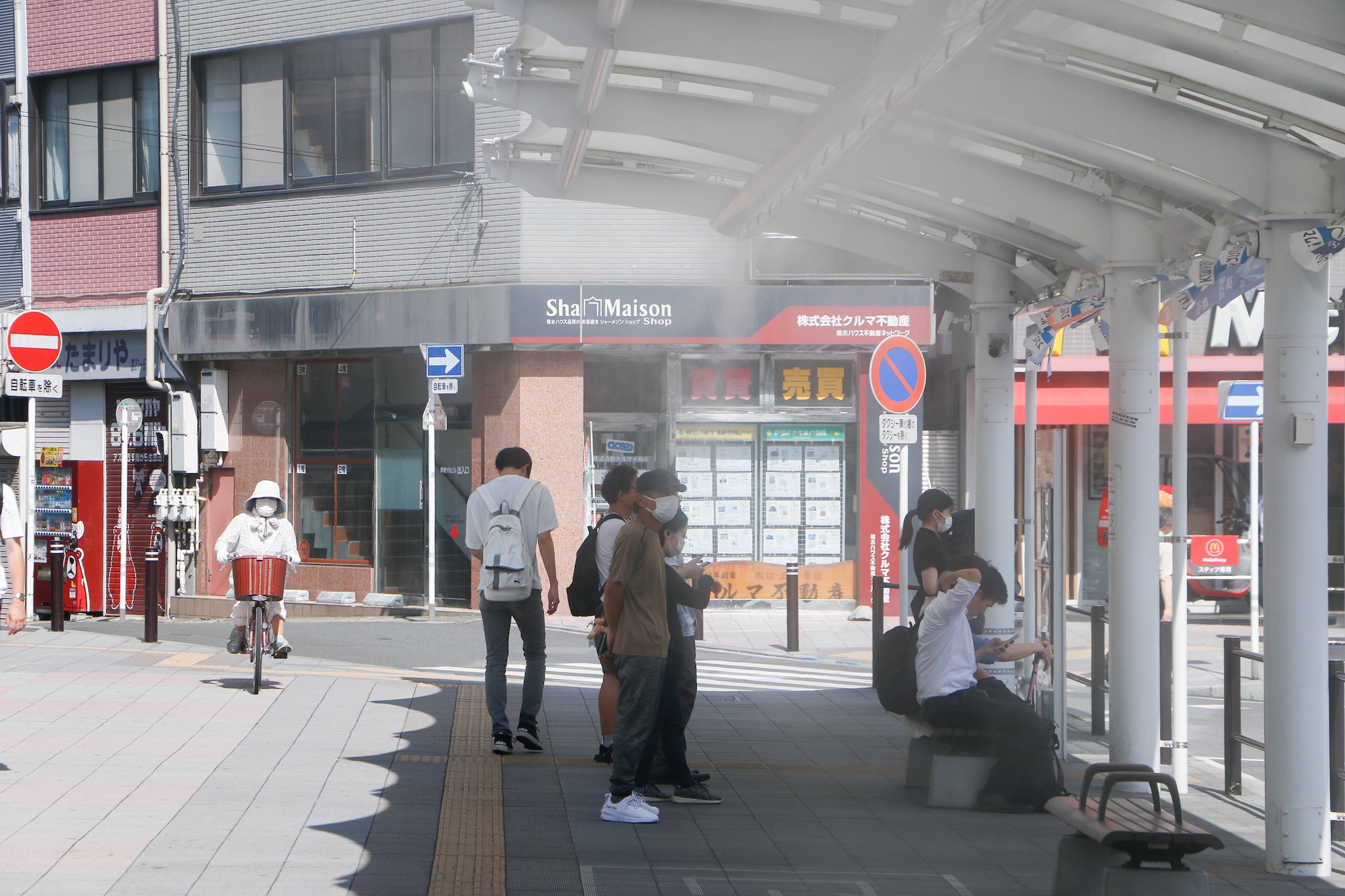
Measures taken by the municipal government to cope with the extreme heat range from the city mascot promoting the use of parasols to the city’s school education division turning middle schoolers into “heat countermeasure supporters” — as part of this, they receive automated external defibrillator training and are used as the voices of emergency broadcasts when heat alerts are issued.
“Kumagaya is known as a hot city, and because of this, we've shifted our focus to aiming to be the No. 1 city for heat countermeasures, changing our approach from just being a hot city to taking proactive steps against it,” said Souki Murakami, an official at Kumagaya’s Environmental Policy Division.
Updating the city’s urban infrastructure has been a significant aspect of such efforts. In 2008, it became one of the first cities in Japan to install overhead cooling misting systems, with these placed outside Kumagaya Station. They operate automatically from 7 a.m. to 8 p.m. if certain weather conditions are met: temperature above 28 Celsius, humidity below 75%, wind speed below 3 meters per second and no rainfall.
Over the past two years, the city has received more and more inquiries from other towns and cities as they, too, grapple with new levels of heat.
“We received many questions like, ‘We want to install new ones (misting systems), which vendor did you choose?’” Murakami said. “Since it’s hot everywhere, city council members and others might have suggested implementing them.”
The city has also been updating other infrastructure by, among other things, adding green plants and coating roads and playground equipment with heat-insulating paints and materials.
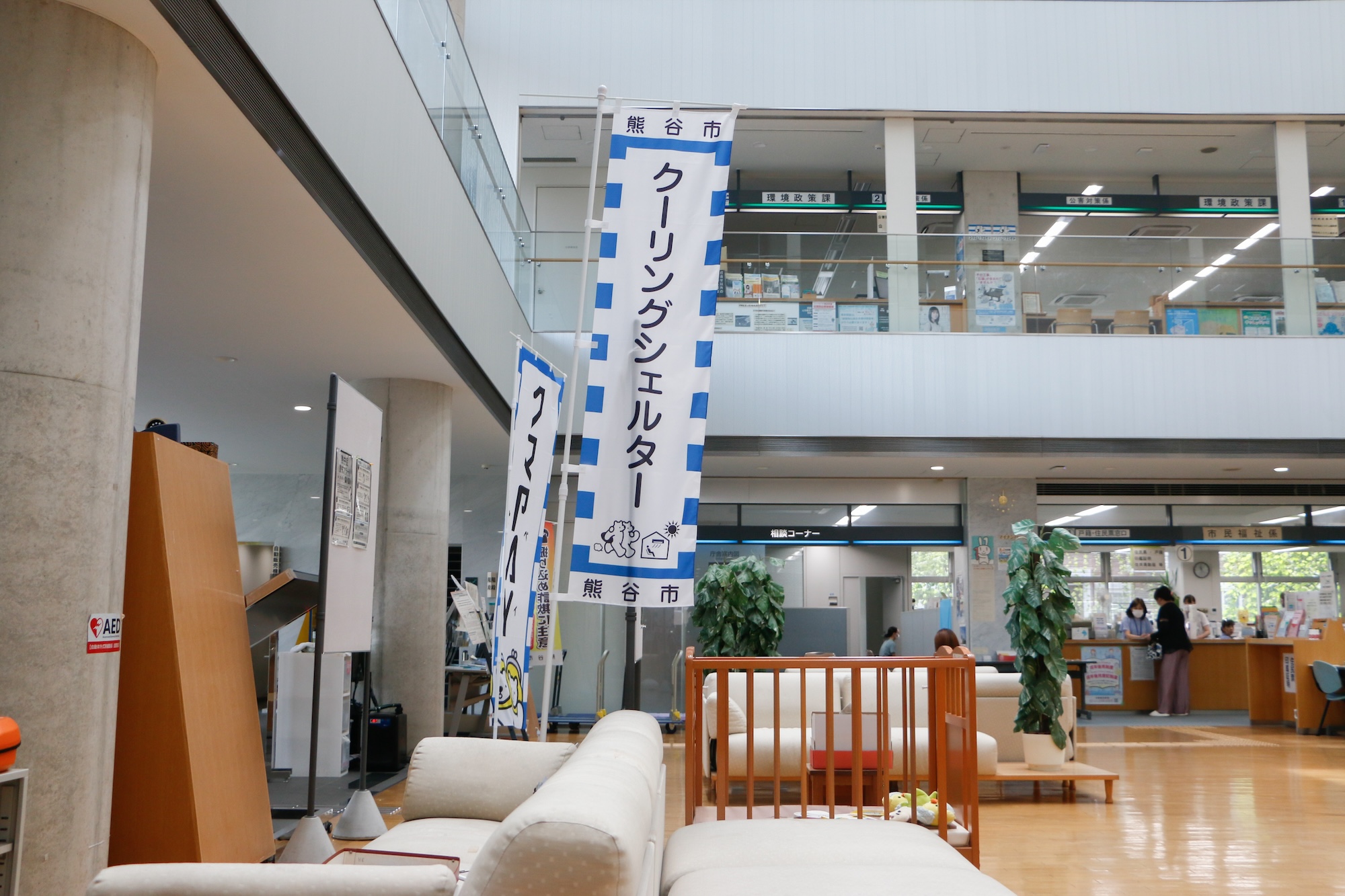
A revised climate change adaptation law that went into effect in April urges local municipalities to set up indoor cooling shelters for use during extreme heat conditions. In Kumagaya, a total of 30 spaces have been designated for this, including 17 in buildings run by private businesses such as drug stores, department stores and supermarkets.
One of these cooling shelters, located in the city’s Konan Administrative Center, has couches that can sit six people and a baby cot with stuffed animals and picture books.
While there aren’t so many people going to the shelters for relief, as most have air conditioning in their cars and homes, these spaces provide readily available respite in case of a contingency, said Ken Aoki, another official at the Environmental Policy Division.
For elderly people and those with disabilities who are living on their own, the city also employs special ways to inform them about emergencies, such as when heatstroke alerts are issued, city officials said. In addition to conveying alerts via smartphones and the internet, community volunteers reach out to elderly people registered as living on their own, while blue patrol cars with speakers drive around the city during the hottest hours of the day broadcasting announcements.
“We used to see that some summers would be hotter and some cooler. But lately, it just keeps getting hotter,” Murakami said. “Our citizens are becoming more aware of (the heat) because we need to seriously think about this every year.”
Nemuro, Hokkaido
Located on Hokkaido’s eastern coast, the port city of Nemuro has a claim to being the coolest city in Japan. Summertime usually sees fog and mist roll in from the Tsuruga Strait and Pacific Ocean, keeping the city’s temperatures much lower than other Hokkaido cities at that time of year.
But even in Nemuro, heatstroke is becoming a problem. Officials are advising residents to prepare themselves for hotter summers, emphasizing the importance of keeping hydrated, as well as that sweating is a normal process to regulate body temperature — basic advice for a part of the country where air conditioning, long seen as a useless expense, has only recently expanded and traditionally cool days mean people aren’t as used to sweating as much as those in hotter climes.
In July, daily high temperatures in the city ranged from a low of 17.6 C on July 6 to a high of 32.6 C on July 23.
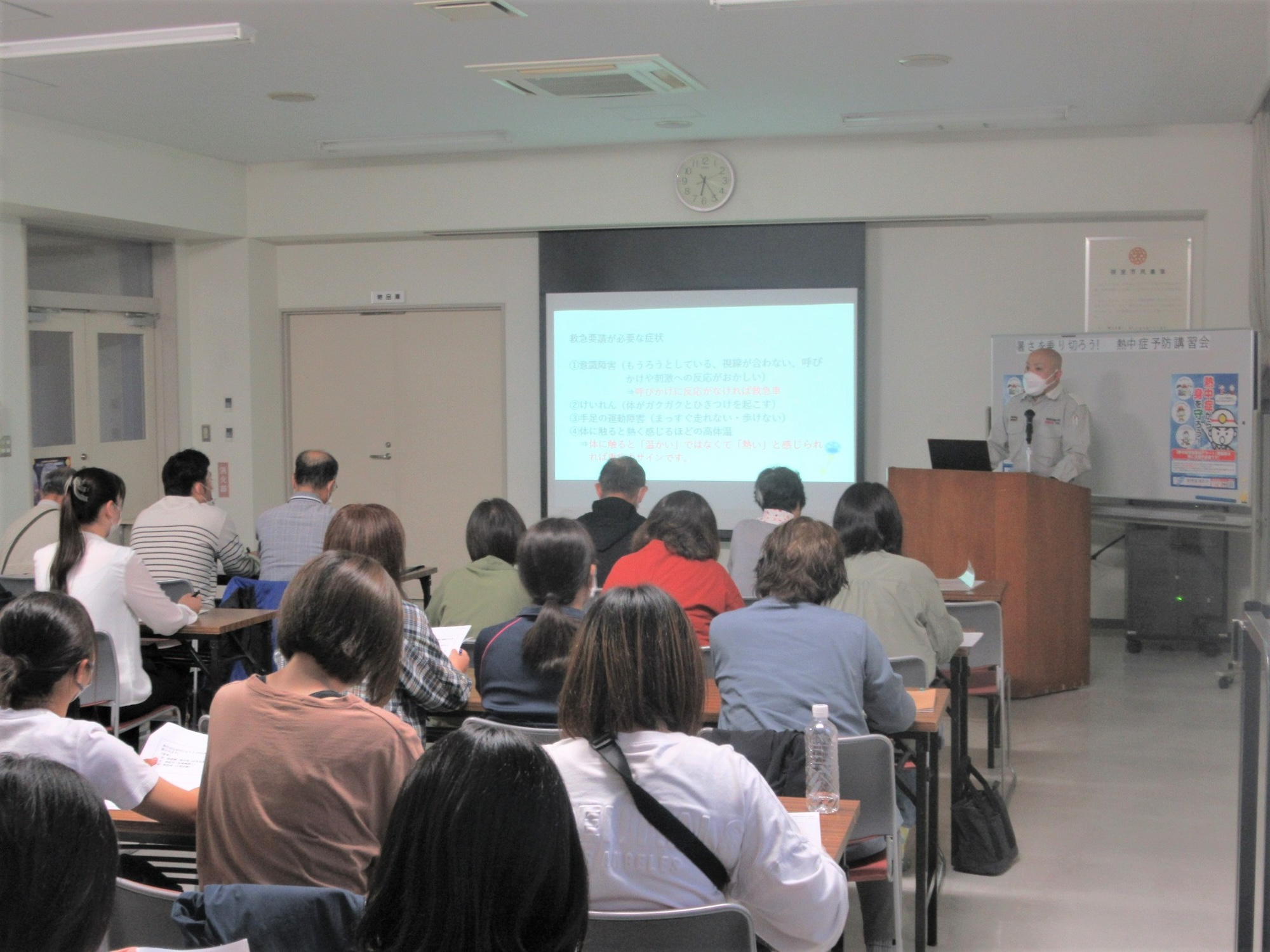
A cooler month than in many other places, but Yoshimi Ikeda, an emergency response official at the Nemuro Fire Department, says heatstroke is a growing problem. In 2023, 17 people were transported by ambulance to area hospitals for the condition — the highest number ever.
On July 5, the fire department conducted a seminar on how to avoid heatstroke this summer.
“We advised those who are not accustomed to the heat to sweat naturally as much as they can, as well as to drink lots of water and be aware of the dangers of heat for elderly people and for children and infants,” he said. Residents who suspect they may be suffering from heatstroke were urged to cool their heads and bodies with ice.
At present, Nemuro does not have designated cooling shelters. But Ikeda says more public buildings, including schools, are having air conditioners installed. Eventually, they’ll probably be designated as summertime cooling shelters.
“There’s an attitude of ‘Hokkaido is cool, so people don't get heatstroke.’ ”
Maki Kawasaki, an official at the Hokkaido Prefectural Government
“Ten years ago, few Nemuro businesses and homes had air conditioning. But due to the heat of recent years, more people now believe it’s necessary. Our fire department just installed air conditioning this year,” Ikeda said.
Becoming educated about the risks of extreme heat is especially important for those living in Nemuro, because although it has a population of only about 23,000, the local fire department and ambulances must cover a wide geographical area. Emergency response times to some places are at least 30 minutes.
“This is the time of year when many people (in more remote areas) are outdoors drying kelp, so there is a high risk of heatstroke,” Ikeda said. “Knowing, or not knowing, in advance what first kinds of aid and heatstroke countermeasures are needed will affect the prognosis of the victim once the ambulance arrives.”
For Nemuro, and for Hokkaido as a whole, though, one of the biggest challenges in dealing with heatstroke is convincing residents that it’s an issue, said Maki Kawasaki, an official at the Hokkaido Prefectural Government involved with heatstroke countermeasures, especially as they relate to elderly people.
“There’s an attitude of ‘Hokkaido is cool, so people don't get heatstroke,’ or that ‘Only those at high risk, such as the elderly and children, suffer from heatstroke,’” she said.
In addition, although air conditioning is effective in preventing heatstroke, many elderly people in Hokkaido don’t use it, even when it's available.
“So there is a need to change the perception among them regarding its use,” Kawasaki said.

